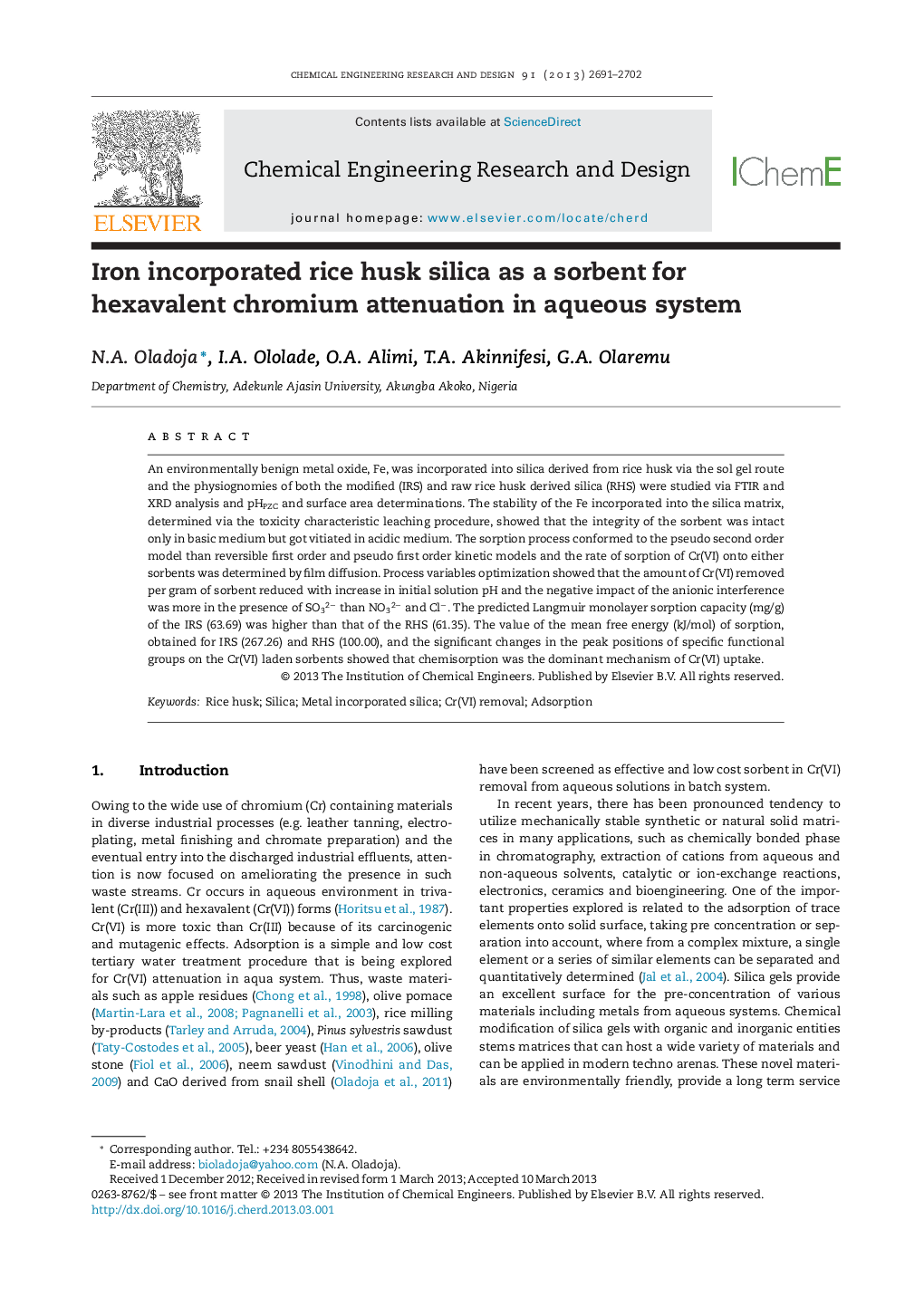| Article ID | Journal | Published Year | Pages | File Type |
|---|---|---|---|---|
| 620651 | Chemical Engineering Research and Design | 2013 | 12 Pages |
•Stability of IRS was intact in basic medium but got vitiated in acidic medium.•The rate of sorption process was determined by film diffusion.•Cr(VI) removed per gram of sorbent reduced with increase in initial solution pH.•The presence of SO32− had greater negative impact than the presence of NO32− and Cl−.•The mean free energy value and FTIR showed chemisorption as mechanism of sorption.
An environmentally benign metal oxide, Fe, was incorporated into silica derived from rice husk via the sol gel route and the physiognomies of both the modified (IRS) and raw rice husk derived silica (RHS) were studied via FTIR and XRD analysis and pHPZC and surface area determinations. The stability of the Fe incorporated into the silica matrix, determined via the toxicity characteristic leaching procedure, showed that the integrity of the sorbent was intact only in basic medium but got vitiated in acidic medium. The sorption process conformed to the pseudo second order model than reversible first order and pseudo first order kinetic models and the rate of sorption of Cr(VI) onto either sorbents was determined by film diffusion. Process variables optimization showed that the amount of Cr(VI) removed per gram of sorbent reduced with increase in initial solution pH and the negative impact of the anionic interference was more in the presence of SO32− than NO32− and Cl−. The predicted Langmuir monolayer sorption capacity (mg/g) of the IRS (63.69) was higher than that of the RHS (61.35). The value of the mean free energy (kJ/mol) of sorption, obtained for IRS (267.26) and RHS (100.00), and the significant changes in the peak positions of specific functional groups on the Cr(VI) laden sorbents showed that chemisorption was the dominant mechanism of Cr(VI) uptake.
